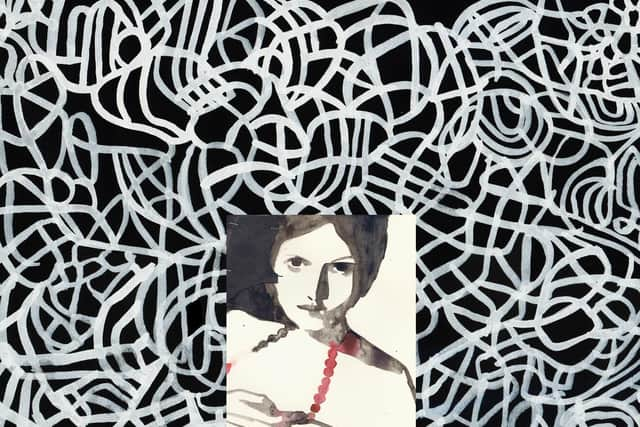Book review: Checkout 19, by Claire-Louise Bennett


This is one of the most extraordinary books it has been my privilege to review. Where to begin? It’s often said that it’s a wrong to judge a book by its cover, and rightly so. That said, in this book, Roald Dahl’s collection of adult short stories Switch Bitch is very much judged by its cover, and the author photograph. So here’s a tip. Check next to the barcode at the bottom on the back cover. It says “Fiction” here. Other books will have “Travel” or “Memoir” or “Biography” and suchlike. The late, great WG Sebald, when asked which nouns he wanted to describe The Rings Of Saturn, supposedly said “All of them”. But there’s another set of signs. The book is endorsed by Tom McCarthy, one of the most interesting avant-garde novelists of these days, and by Karl Ove Knausgaard, that relentless proponent of what is now called “auto-fiction” and I call sheer egotism. Then the cover: scribbles and a woman (painted by a woman and designed by a woman). Finally the fly-leaf, where the reader is told the book is “fusing fantasy with lived experience”. How does the reader negotiate and decode these contradictory signals? Well, with joy.
I have been reading at night a very interesting if academic book by Antoinette LaFarge, Sting in the Tale: Art, Hoax and Provocation, which deals with the concept of “fictive art”. In essence these are not forgeries and not fakes, but creations or installations that insert themselves into history by the use of fictional artists, with fictional biographies and often with a way of letting the audience understand the essentially fictional nature of the endeavour. Checkout 19 reminded me a great deal of those kinds of strategies and tactics.
Advertisement
Hide AdThe book gives you many clues as to itself. In the central section the narrator says “We were not quite ourselves. We were not quite ourselves. We were drama”, and earlier “Like performers in the avant-garde tradition they were alert to the ways sustained repetition produces subtle and absurd variations that are as transfixing as they are subversive” (this actually refers to the behaviour of schoolboys). These tolling repetitions have shades of Beckett, and they do, in a very elegant fashion, mean the reader gives a slightly different timbre to the refrain. It is as if the same words can not mean the same thing.


It opens with a deliberate disconcerting of the reader. The opening chapter is written in the first person plural. It deals, as does much of the book, with the relationships around reading: as escape, as education, as burden, as what French theorists called jouissance, as challenge, as archive. The first page has “We didn’t very much like tons of books did we. No, not really, and neither do we now. We like one book. Yes, we like one book now and we liked one book then”. The reader has to think through the possibilities of “we”. More than one person? Possibly twins or very close friends, as one of the “we”s can be contradictory? Or is the “we” a single person speaking to themselves? The passage quoted is also retrospectively ironic when I re-read the book, as there are a great many books mentioned throughout, although EM Forster’s A Room With A View is placed as an epigraph and forms a significant moment about reading and misremembering. (It’s not a novel I have much fondness for, and was surprised to realise I could not remember the name of the male protagonist, until he crops up in this text).
But the book is tonally diverse. The second section is an account of a schoolgirl crush on a teacher who is at best better than average and about the first stirrings of writing as well as desire. It is important that what becomes the narrator’s first story begins as an attempt at drawing, which is not good and so morphs into scribbling out, and then transforms into a sentence. All writers – and Bennett is an exceptional one – ought to know the virtue of scoring out. The central section is marvellous. In part it is an account of a story written in the narrator’s early twenties about a bizarre figure called Tarquin Superbus. She honestly admits she doesn’t really know where or when his story is set – Vienna and Venice are both possibilities, but Tarquin is different in each. It eventually transforms from naïve to a piece worthy of Calvino or Borges, but unfinished. The piece also doubles as a syllabus. If you want to know about avant-garde writing, this gives you the reading list. It’s also funny, in that the narrator contrasts what she has and hasn’t (yet) read. But the name Tarquin ought to be a flag. The most harrowing chapter features the narrator being raped by her seemingly nice boyfriend. Tarquinus was the last Roman king, overthrown after his rape of Lucrece, the subject of a too-little-read poem by Shakespeare.
At the end the “we” is back, giving a neat circularity to the book. It may seem to sprawl and digress but is phenomenally engineered. If I were a Booker judge again, I would move heaven and earth to get this on the shortlist.
Checkout 19, by Claire-Louise Bennett, Jonathan Cape, £14.99. Claire-Louise Bennett is appearing at the Edinburgh International Book Festival on 28 August, see www.edbookfest.co.uk
A message from the Editor
Thank you for reading this article. We're more reliant on your support than ever as the shift in consumer habits brought about by coronavirus impacts our advertisers.
If you haven't already, please consider supporting our trusted, fact-checked journalism by taking out a digital subscription at https://www.scotsman.com/subscriptions